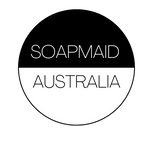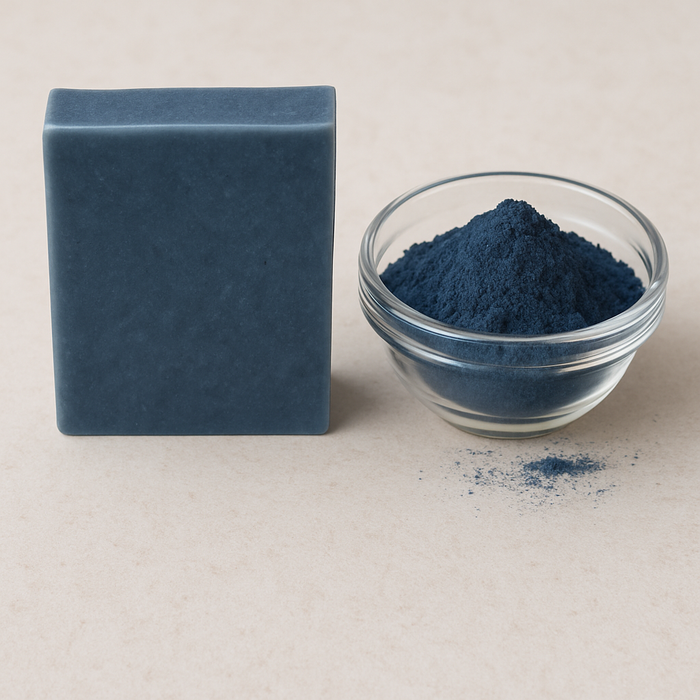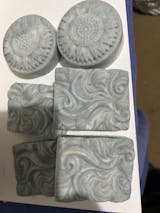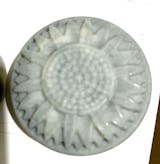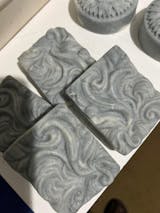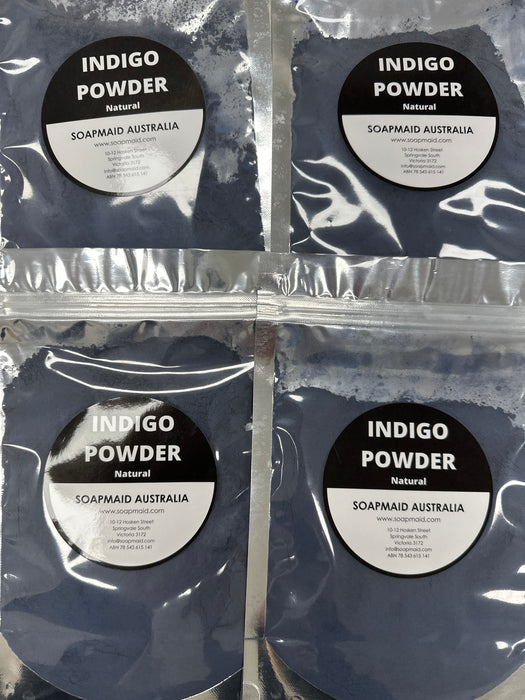
Indigo Powder
Blue Indigo Powder – Natural Plant Dye for Soap & Cosmetics Australia
Premium Natural Indigo Powder | Natural Blue Soap & Makeup Colourant
Elevate soap & makeup with natural indigo powder. Perfect for creating vibrant blue designs, this plant-based colourant delivers rich, stable tones. ▼
Soap & Cosmetic Applications
Enhance creations with natural indigo powder for soap making. Provides true blue pigment without bleeding.
- Cold Process Swirls: 1–3% of oils (0.5–1.5 tsp per lb) for ocean-deep blues
- Eyeshadow Pigment: 5–15% in mineral base — mix with shea butter for creamy texture
- Melt & Pour Colour: 0.5–1% dispersed in glycerine with sodium lactate for translucent sapphire
Other Creative Uses
Explore beyond soap with natural indigo powder — versatile for natural beauty crafts.
- Lip Stain Base: 2–5% for cool blue undertones in balms
- Nail Polish: 3–8% for deep, plant-based navy shades
- Tiger Stripe Soap: Layer undispersed powder for bold contrast
Frequently Asked Questions About Natural Indigo Powder ▼
Q: Is natural indigo powder safe for soap & makeup in Australia?
A: Yes — 100% cosmetic-grade Indigofera tinctoria, skin-safe, TGA-compliant for soap and colour cosmetics.
Q: How much indigo powder do I use in cold process soap?
A: Use 1–3% of oils (0.5–1.5 tsp per lb). Disperse in 1:3 lightweight oil (grapeseed/jojoba) and add at light trace for clean, bleed-free swirls.
Q: Does it bleed or fade in soap designs?
A: No bleeding when properly dispersed. pH-stable through saponification (9–10); colour deepens during cure. Lightfast 12+ months if stored away from direct sun.
Q: Can it be used in melt-and-pour soap or eyeshadow?
A: Yes — 0.5–1% in M&P (glycerine dispersion); 5–15% in mineral makeup for rich blue pigment. Stable pH 4.5–8.5.
Q: Does it ship across Australia?
A: Yes — delivery Australia wide.
Q: What makes your indigo powder unique?
A: 100% pure leaf powder, vibrant green-blue hue, no fillers — outperforms synthetics in natural appeal and design precision.
Q: Is it suitable for sensitive skin or sunny climates?
A: Yes — non-irritating, plant-based. Mix with coconut oil for gentle blue balms; store finished products shaded in hot Aussie conditions.
🔍 Resources
SPECIAL ORDERS FOR OVER 10kg – Email info@soapmaid.com for personalised quotes.
